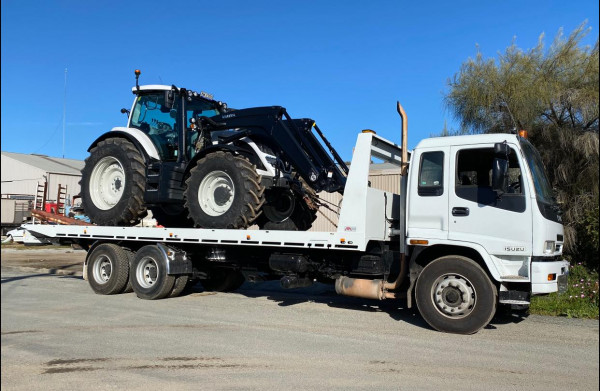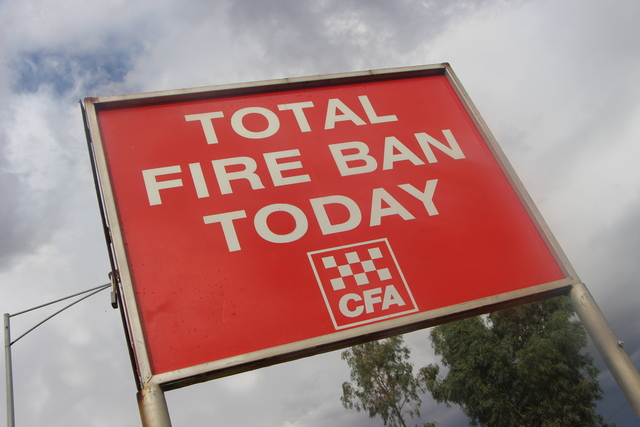Cohuna tractor dealer Jakab Motors jumped the gun on the global logistics meltdown – and there are a lot of farmers in the region thanking them for it.
Handling both Massey Ferguson and Valtra, dealership co-principal Rachael Warren says that at the start of 2022 the business began advising all clients if they wanted new machinery in the foreseeable future, order it now.
And it would appear the clients were paying attention, because as the rest of the country struggles to fill any orders, a fair whack of big-ticket machinery has not just arrived in Cohuna, it has been delivered to farmers.
“At our March open day, we repeated the advice and we have managed to get nearly everything ordered delivered, processed and taken to the new owners,” Rachael says.
“There really was a lot of interest at the start of the year and once we filled the majority of those orders, demand has slowed right down,” she says.
“I think that is partly driven by the frustration hitting most industries with the logistical challenge of moving anything anywhere right now.
“Getting a manufacturer who has what you want, getting a container and then a ship is proving an almost impossible task.”
Rachael says the flip side of the world shortage of new farm machinery is the absolute boom in machinery repairs and the sale of second-hand machinery.
She says their workshop workload is off the charts, and any used machinery, if they can get it, “flies out the door”.
Repairs, she added, are seeing things such as new pins or drive shafts being installed, when previously the farmer may have traded that model in and gone for the latest version. Some would never have warranted the investment but right now they are the best option.
“We have actually reached our annual sales already but I think it will probably level out now; because the chances of having much more new machinery arrive before Christmas isn’t all that good,” Rachael added.
“The wet weather has also caused some producers to have second thoughts and everyone knows both Massey Ferguson and Valtra are about to bring out new models so some are waiting to see what they are as well.”
Looking to the the wider industry, sales of agricultural tractors in August have continued to plough onwards and upwards – surging 22 per cent on the same month last year.
And according to the Tractor and Machinery Association of Australia they are now 2.5 per cent up on the 2022 year to date.
Its monthly update describes this as “a particularly strong result given the rush of buyers that occurred in June, keen to maximise use of the Federal Government’s temporary full expensing program”.
TMAA executive director Gary Northover says as his group has been reporting for some months now, the industry’s ability to still deliver tractors has been due to the regular forward ordering that has been occurring for the past two years in anticipation of supply challenges.
But Gary says if a farmer wants a specific ‘bespoke’ tractor ordered from a factory, then delivery will be at least 12 months.
Indeed, he says most dealers now are resisting taking forward orders because of the uncertainty surrounding supply, combined with the price movements that are beginning to occur across the board.
“The big question being asked at present is when this incredible upswing will come to an end,” Gary says.
“With tractor sales running at around 50 per cent ahead of what has traditionally been seen as a great year, there is no doubt that this can’t continue,” he says.
“Delays in supply have served to smooth out the peaks in the market, but we are beginning to see signs of when the current boom might end.
“Ownership costs are rising steadily, with both purchase prices and financing costs rising steadily and the current tax incentives are in their final year.
“The challenge for dealers will be to get the timing right regarding inventory given the prospect of machines ordered 12-18 months earlier, might arrive at a period of weakened demand.”
Looking at sales across the nation, results were strong across the board, with NSW sales up 8 per cent to be now 1 per cent behind last year. Queensland was up 46 per cent to be now 13 per cent ahead year to date and Victoria was 24 per cent up on last August, due mainly to the supply of small horsepower units and is now up 3 per cent on last year.
South Australia was up 13 per cent for the month, while Tasmania was down by 23 per cent and sales into the Northern Territory were up 89 per cent.
Gary says looking at the performance reporting categories, the small under 40hp (30kw) category was strongly up 25 per cent, to be 10 per cent ahead YTD.
At the same time he says the 40 to 100hp (30-75kw) range was up 21 per cent in the month to remain 4 per cent ahead YTD and the 100 to 200hp (75-150 kw) category was up again, 7 per cent ahead in August to be 4 per cent behind YTD.
“The large 200hp (150kw) plus range was the standout again this month, 55 per cent ahead of the same month last year, although it is still 1 per cent off YTD,” Gary added.
“Combine harvester sales are ramping up in preparation for this year’s harvest and are now 19 per cent ahead of the same time last year,” he says.
“There is every expectation of another 1000-plus for this product as the renewal of fleets occurs in anticipation of another bumper harvest.
“Baler sales have slowed through winter and are now down 19 per cent compared with last year, and sales of out-front mowers finished down again by 3 per cent.”
Rachael is a little more conservative about the season.
She says while it “looks great” right now, some people are starting to keep their eyes on the skies, wondering if they will actually be able to get their crops or hay off.
“The whole market situation is like nothing before,” she says.
“With COVID still impacting staffing levels, and that’s on top of serious staff shortages across the board, combined with the access to raw materials, new machinery, containers, shipping, road transport and logistical challenges right down the production chain, it’s just coming at us from every direction.”
Rachael says as much as they were advising people earlier in the year to get in early, that same advice now applies to spare parts, because it is already getting tough to source certain parts anywhere.
She says they believe that will be the situation for the next couple of years.
“Even some of the machinery that has arrived, or is due, is often missing parts that haven’t arrived at the same time,” she explains.
“We have ended up delivering tractors with no GPS or missing buckets, for example, and when they do turn up we run them out and have them fitted – all which contributes to a slowing of delivery times even though the machine is in the yard.
“The real key is we are a relatively smaller, local business, and that means we can better communicate with our clients because we see them around the town, at the footy or in the local pub or restaurant – during COVID it was very isolating and hard but it’s much better now.”







